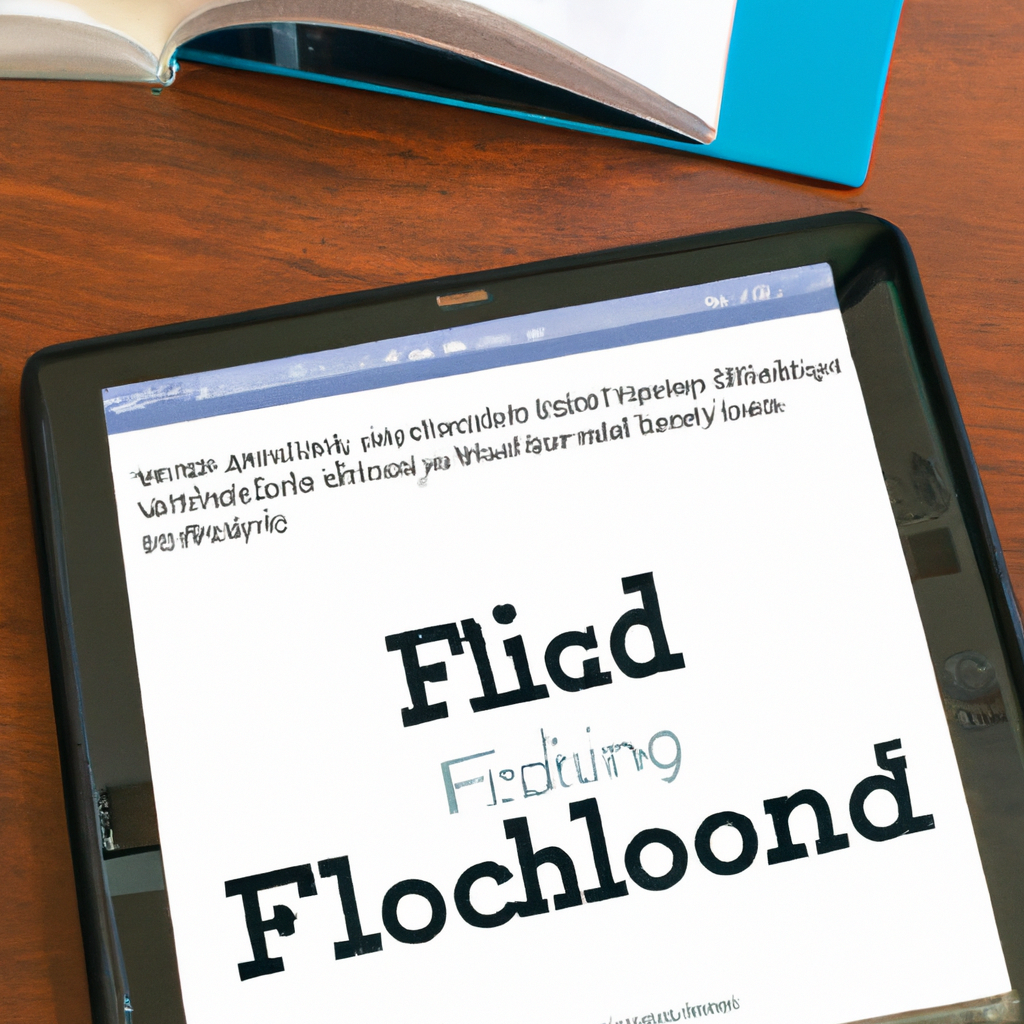The Power of Feedback: Unleashing the Transformative Magic of Constructive Input
In the vast realm of education, amidst the bustling corridors of knowledge, there exists a remarkably potent force that holds the key to unlocking the true potential within every student. It has the unrivaled power to ignite growth, cultivate resilience, and bring forth remarkable improvements. It is none other than the enigmatic force of feedback.
Imagine, if you will, a humble seed nestled within the earth, eagerly awaiting the nourishment it craves to blossom into a vibrant flower. Feedback, much like the gentle touch of sunlight, provides the essential sustenance required for a student’s intellectual growth. Its transformative magic has the ability to shape their experience, guide their journey, and allow them to flourish in ways that were once thought impossible.
Yet, feedback is far more than mere commentary or evaluation. It transcends the realms of judgment and critique, transcending into the realm of constructive input. It is a delicate art that calls upon educators and mentors to tread lightly yet firmly, as they carefully navigate the intricate pathways of student improvement. By providing targeted feedback, they unlock a world of possibilities, inspiring students to stretch the boundaries of their knowledge and reach new heights of academic prowess.
Within the echoing halls of learning, feedback acts as a guiding compass, illuminating the path towards self-discovery and development. It fosters a growth-oriented mindset, nurturing the seeds of resilience and adaptability that lie dormant within every student. By fostering an environment that celebrates feedback, education becomes a harmonious symphony of collaboration and growth, where mistakes are embraced as stepping stones towards progress, and every setback becomes an opportunity for advancement.
As we embark on a journey to explore the inherent power of feedback, we unravel the multidimensional tapestry that shapes the educational landscape. With an unbiased lens and an unwavering commitment to neutrality, we shall illuminate the myriad ways in which feedback, when thoughtfully wielded, has the potential to revolutionize the very core of education. For within the nexus of feedback and student improvement lies the gateway to a brighter future, where the seeds of knowledge can blossom into a flourishing garden of unparalleled potential.
1. Unleashing the Potential: Exploring the Transformative Power of Feedback in Student Growth
Feedback plays a crucial role in unlocking the full potential of students and fostering their growth. It is a transformative tool that empowers students to reflect on their strengths and areas for improvement, ultimately enabling them to reach new heights of achievement. By embracing feedback as a cornerstone of education, educators can create an environment that nurtures continuous learning and development.
One of the key benefits of feedback is its ability to provide students with personalized guidance and support. With feedback, students receive specific insights into their performance, allowing them to understand what they are doing well and where they can enhance their skills. By pinpointing areas that require attention, feedback empowers students to take ownership of their learning journey and actively engage in self-improvement. Moreover, the individualized nature of feedback ensures that every student’s unique needs and learning styles are taken into consideration, fostering a more inclusive and effective educational experience.
2. Empowering Students Through Feedback: Nurturing Growth Mindsets and Encouraging Success
Feedback is a powerful tool that can empower students, nurturing their growth mindsets and encouraging their overall success. By providing constructive feedback, educators have the ability to guide students on their learning journey and help them develop a positive attitude towards challenges and failure.
One way to empower students through feedback is by focusing on their strengths and areas for improvement. By highlighting areas where students excel, teachers can boost their confidence and motivate them to continue achieving. Offering specific and actionable suggestions for improvement, accompanied by praise for effort applied, can help students see setbacks as opportunities for growth rather than obstacles.
- Encourage a growth mindset: Emphasize that intelligence and abilities are not fixed, but can be developed through effort and practice.
- Praise effort rather than outcome: Recognize and commend the hard work and determination students put into their tasks, regardless of the end result.
- Provide specific feedback: Give students detailed feedback on their work, pointing out specific strengths and areas for improvement.
Moreover, creating a safe and supportive environment where students feel comfortable receiving feedback is crucial. Teachers can establish an open dialogue with students, promoting constructive discussions and encouraging them to ask for clarification or seek additional support when needed. Ultimately, feedback should be seen as a valuable learning opportunity rather than a criticism, fostering a growth mindset and setting students up for continuous success.
3. The Art of Constructive Critique: Fostering Student Improvement with Feedback
Providing constructive critique is an essential skill for educators to nurture student growth and development. By offering feedback that is insightful, specific, and actionable, teachers can empower their students to make significant strides in their learning journey. Here are some key elements to consider when fostering student improvement through feedback:
- Be specific: Vague feedback can leave students feeling unsure about how to improve. Instead, focus on providing concrete examples and details on what they did well and where they could enhance their work.
- Highlight strengths: While constructive criticism is crucial, it is equally important to acknowledge and celebrate a student’s strengths. Identifying their accomplishments not only boosts their confidence but also motivates them to continue progressing.
- Suggest alternatives: Instead of simply pointing out areas for improvement, offer specific suggestions or alternative approaches. This empowers students by providing them with practical strategies to apply in their future endeavors.
By mastering the art of constructive critique, teachers create a supportive learning environment where students feel safe to take risks, learn from their mistakes, and grow both academically and personally. Through well-crafted feedback, educators play a pivotal role in shaping their students’ progress and instilling the lifelong skill of reflecting on and embracing constructive criticism as a powerful tool for growth.
4. From Evaluation to Inspiration: Harnessing the Power of Effective Feedback in Education
Effective feedback in education serves a dual purpose: evaluation and inspiration. It goes beyond merely pointing out strengths and weaknesses to ignite a spark of motivation and growth within students. By leveraging the power of constructive feedback, educators have the opportunity to cultivate a culture of continuous improvement and empower learners to reach their full potential.
In order to harness this power, it is crucial for educators to provide feedback that is timely, specific, and actionable. This enables students to understand how they can enhance their performance and make progress towards their goals. Moreover, by incorporating a mix of positive reinforcement and areas for improvement, feedback can inspire students to become more self-aware and embrace a growth mindset. It encourages them to reflect on their own learning processes, develop problem-solving skills, and take ownership of their education.
- Timely feedback paves the way for immediate reflection and improvement.
- Specific feedback highlights areas of strength and pinpoint areas for growth.
- Actionable feedback provides students with clear steps to take in order to improve.
Furthermore, effective feedback in education can foster a sense of collaboration and trust between educators and students. It encourages open communication and creates a safe space for learners to share their thoughts and ideas. By acknowledging students’ efforts and providing constructive criticism, educators play a crucial role in nurturing resilience, self-confidence, and a passion for lifelong learning.
5. Building a Bridge to Success: Embracing Feedback as the Cornerstone of Student Achievement
Feedback is the fuel that drives student achievement towards success. It is an essential tool that bridges the gap between where students are and where they want to be. By embracing feedback, students can uncover their strengths and areas that need improvement, enabling them to grow and excel in their academic journey.
1. A roadmap for growth: Feedback provides students with a clear roadmap for growth. It helps them understand their progress and areas that require additional attention. By embracing feedback, students can identify their strengths, capitalize on them, and utilize effective strategies to enhance their learning. Moreover, feedback allows students to recognize their weaknesses, giving them a chance to focus on developing those areas to become well-rounded individuals.
2. An opportunity for reflection: Feedback prompts students to reflect on their learning experiences. It encourages self-assessment, self-reflection, and the identification of personal learning styles. By critically analyzing feedback, students can determine their preferred methods of learning, allowing them to tailor their study habits accordingly. This self-awareness fosters a sense of accountability, ownership, and a growth mindset, which are vital components of student achievement.
As we bid farewell to this exploration of the power of feedback, we can’t help but marvel at the incredible transformation that lies within its grasp. Like a magician weaving spells, feedback possesses the ability to unlock hidden potential and guide students towards the pinnacle of their abilities.
In the vast landscape of education, feedback acts as a compass, pointing out areas of improvement, while simultaneously acknowledging strengths. It is the gentle hand that nudges students towards growth, reinforcing their confidence, shaping them into resilient learners. The magic of constructive feedback lies in its ability to bridge the gap between effort and achievement, offering a pathway for progress that is seldom found elsewhere.
Through the delicate art of feedback, educators become architects of inspiration, imparting wisdom that resonates within students’ minds and souls. With each carefully crafted sentence, they carve a path of discovery and enlightenment, fostering an environment where mistakes become opportunities and setbacks transform into stepping stones to success.
Yet, let us not forget the often unsung heroes who receive the invaluable gift of feedback: the students themselves. Armed with a newfound understanding of their strengths and weaknesses, they embark on a journey of self-discovery, equipped with the tools to navigate the treacherous seas of growth and development.
In the realm of education, the power of feedback is infinite. It serves as a testament to our unyielding belief in the potential that lies dormant within each student. It propels us forward, reminding us that our responsibility as educators goes far beyond the imparting of knowledge—it extends to the nurturing of young minds, instilling within them a passion for learning, and guiding them towards a future where success knows no bounds.
So, as we conclude this captivating rendezvous with the might of feedback, let us never underestimate its profound influence. In the hands of caring educators and receptive students, feedback becomes a catalyst for greatness, an elixir of progress, and an unwavering guiding light on the path to academic excellence. With this understanding, we can embrace the undeniable power of feedback, knowing that it has the ability to shape not only students’ educational futures but also the world at large.











